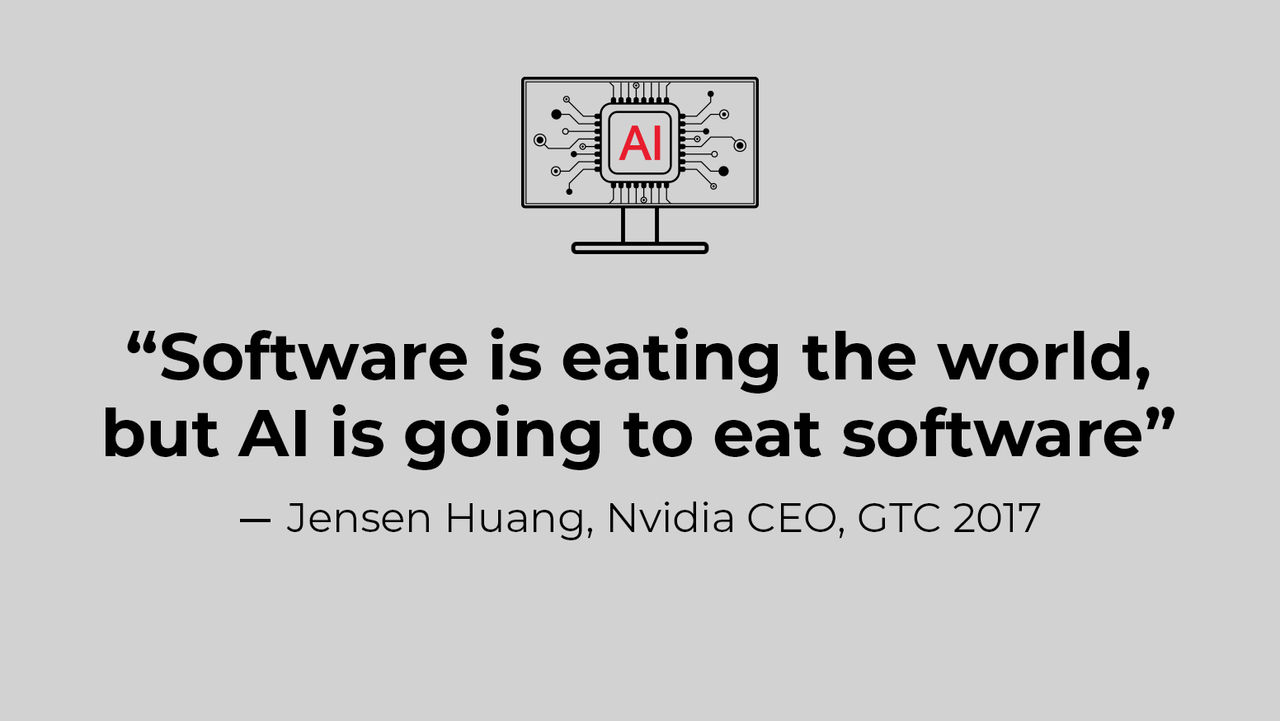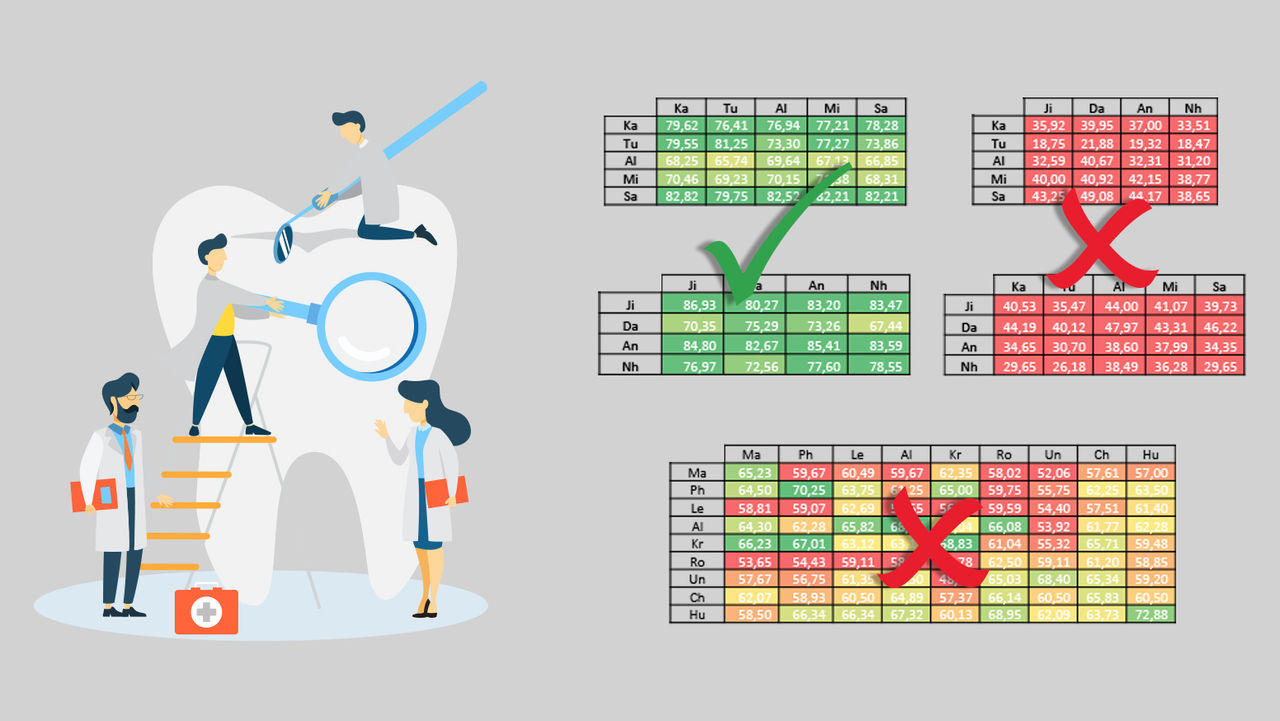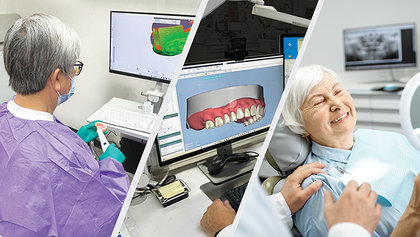2201 Dupont Dr., Irvine, CA 92612
© 2025 Glidewell. All rights reserved.
800-854-7256 USA
Discover how Glidewell pioneers AI technologies to create impactful benefits for clinicians and patients.

In 2017, I had the honor of speaking at the Nvidia GPU Technology Conference (GTC) about the potential of using machine learning and AI in the dental space. In his keynote that year, Nvidia CEO Jensen Huang made a now-famous proclamation that “software is eating the world, but AI is going to eat software.”
Less than a decade later, I think we can fully appreciate his vision because it’s actually happening in front of our eyes.
We’ve been using AI in so many ways at Glidewell to standardize and automate formerly manual processes. But AI also now automates the software development process itself. We can generate new code using AI — even at the strategy level — simply by using Microsoft Copilot and other such tools.
This ability fits very well with what our teams have been doing over the past few years. So in this article, I want to focus on one application that has significantly improved the experience of our doctors, in-house technicians, and even other labs: dental design automation.
If you have ever seen or experienced conventional dental design, you know that, traditionally, it’s been a very tedious process. It took a lot of time, using limited software tools, to define shape, morphology, margins, contacts, occlusion, and more. Most importantly, it’s very technique sensitive. It really depends on how skilled the technician is. And even the same person can perform differently at different times of a given day.
Nor is everyone an artist. So the results can vary a lot.
In order to put this in numbers, we conducted an experiment. Years ago, we gave a group of technicians a bunch of crowns to evaluate. And what we saw was very interesting. We learned that people tend to agree within small groups, but they disagree between those groups. And then there is a bigger group of people that doesn’t agree with anybody.

And that essentially poses a very interesting question, already being discussed from the manufacturing point of view: How do we achieve consistent quality at scale? We have ways to confirm that a crown we make matches the crown we designed, but how do we make sure that we actually design the right crown for each patient and do so consistently?
It’s a difficult problem that we’ve worked to solve for over a decade now. And we tried different approaches.
First, we tried to mimic the process that people were using and simply automate that with conventional software development tools, conventional algorithms. It didn’t bring us the results we wanted.
Second, we tried something slightly different — and what I would say is a naïve machine-learning approach. From our millions of cases that were already designed and produced, we tried to look for a case similar to the one we were working on, and use the same crown for our new case. That approach didn’t work very well for us either.
Until we saw a famous fake video featuring Morgan Freeman. The internet is full of such synthetic content: videos that look very real, but are actually fake. For a human observer, it’s almost impossible to tell.
This is almost precisely what we’re attempting to do when restoring natural anatomy. Ideally, we want to replicate a tooth to the point where our crown blends into the mouth so well that we cannot tell it’s fake.
So, when we saw this technology, we realized that, yes, this is something that can help us actually achieve the results we were looking for.
The technical name of this is generative adversarial networks, or GANs. I will explain how it works in simple terms.
Imagine you want to create an image of a bearded person. What you need is an algorithm or virtual artist, if you will, that will create that image. This is fairly easy to do. But that image will not look real. It’s like the work of a beginner artist.
So you need something else that will be able to discern and essentially reject the initial effort as “not good enough.”
How do we develop this knowledge? We need to train it on images of real people. Once we do that, then that second algorithm, the teacher or virtual guide — what we call the “discriminator” — can provide relevant guidance to our beginner artists and indicate how it must improve.
When these adversarial components play this game long enough, they get to a point where they create something that looks realistic. It looks so realistic that, for the human eye, it looks perfect, or indistinguishable from reality.
It’s not a photo of a real person. It’s actually a fake photo that was generated. But it looks absolutely real.
Now imagine you take this approach and train it on the millions of cases that we’ve accumulated in our cloud. As you just heard, we essentially get a designer and the visual quality control inspector that together can create designs on par with our best designers.
I say “best” because we obviously don’t want to draw upon all 30 million. We select those we deem the best, because we know some people perform better than others. We take these high-quality cases and train the system on those ideal examples.
Of course, we need to have some validation for this. It’s not enough to say that this looks good. According to who? So we were fortunate enough to have our best technician, Mr. Jim Glidewell, spending months with us reviewing crowns daily to make sure that the generated designs are the very best that could be delivered to a patient.
When complete, we published a study of our work. It actually started as a collaboration with representatives from UC Berkeley.
Funny story: The professor that was leading the group, when I first reached out to him, asking his opinion about the applications of AI in the dental space, he didn’t even reply.
Later, after he did reply and we began collaborating, he admitted to me that he thought my outreach was a scam. Because what does a dental lab have to do with machine learning? He saw this as some sort of solicitation featuring a Nigerian bank or something like that.
But when we came out with this study, it made waves well beyond dentistry. This was the first — and, to my knowledge, the only, even to this day — application of using GANs in the physical world. There are a lot of things done in virtual environments — in cinema and gaming industries and the like. But when it comes to the physical world, there are not many real-life applications. Here we are making crowns that actually fit in patients’ mouths.
So the original inventor of this technique, Ian Goodfellow, gave it a name: “GANufacturing.” A vice president at Amazon was also excited about this, featuring our work while highlighting the promise of generative AI at an AWS conference in 2019.
From those maybe not-so-humble beginnings, we’ve gone on to build a digital workflow that receives and assesses intraoral scans directly from the doctor and then immediately sends them to our proprietary design service.
As you might imagine, it’s not your familiar design service. It’s an automated design service that we call “CrownAI™ Software.” No human is in the loop. Designs are generated automatically. By the time the design is routed to a technician, all they need to do is review it, just to evaluate and make sure that it’s all right.
And they don’t need to spend a lot of time on it.
The design then goes straight to our digital manufacturing facility, which mills, stains, glazes and inspects the final product. From there, it’s shipped to the dentist and delivered to the patient’s mouth.
Now, the fact that the designs are generated almost instantaneously presents interesting opportunities for further improvement in the clinical workflow.
First, we can identify deficiencies in the preparation. If we detect something that suggests we will not be able to make the crown successfully, we can notify the doctor while the patient is still in the chair, offering a chance to adjust the preparation before the patient leaves and it’s too late.
Also, if we have the postoperative scan from the doctor, we can identify and quantify any potential issues, such as open margins, and feed these results back into our algorithm to improve future outcomes.
As of today, we now have more than 4 million patients wearing AI-generated crowns without even being aware of it. And we saw the productivity of our designers grow very quickly. When I came to this company, designers were using 3Shape software, and they were making 40–50 crowns a day. Today, we have people who design up to 200 crowns a day because they don’t need to do much.
More importantly, the returns are below what we saw before using a manual process.
We also took this success from the lab to the clinic, implementing it in our chairside CAD/CAM system, the glidewell.io™ In-Office Solution. Here, it’s been even more beneficial. Because design traditionally was one of the roadblocks for chairside milling adoption. Now, since the design process is simplified so much that it basically boils down to mere verification, there’s no roadblock anymore. Everybody can do it.
We hear comments like: “You essentially eliminated the learning curve for design.” Some people even complained about it. In the past, same-day or single-visit dentistry required specialized knowledge. Now, anybody can do it. So the competitive barrier to entry is being lowered. It effectively no longer exists.
And, again, we can actually measure the impact. We can track chairside usage and see that design time is reduced significantly. And the number of active users has grown substantially in the last couple of years. An oft-cited reason is the software’s ease of use, along with ready access to our lab-based designers, if desired.
I’ve written mostly with respect to crowns, but our design software is in no way limited to single units. We’re using it for long-span bridges and even esthetic cases. As it continues to learn and improve, our CrownAI software will facilitate restorations for patients facing highly complex, life-changing situations.
The example below is another interesting application of machine learning. You may have heard about our newly released Glidewell Signature™ service, where we improve virtual communication with a doctor to provide feedback and preview how the patient will look after treatment. This image is not a photo after treatment. It’s actually a prediction of the treatment outcome using the design made for that patient.
So it’s not just a nice picture. It’s actually how this patient will look. Which is obviously critical if it improves acceptance, improves confidence. And it’s easy for a patient to agree because the predicted outcome looks so much better than the present condition.
Putting it all together, Glidewell has invested significantly over the years in software development. With the industry-leading volume of cases we receive, we’ve managed to accumulate an incredible amount of data in our cloud. We can now harvest that data for machine learning and AI, use it to improve service to our customers, and help them to treat their patients better and faster.
This comes back to us in the form of revenue, which we reinvest, fueling our growth and enabling us to make further technological advancements.
Before parting, I thought it would be fun to share this brief cartoon that depicts how people envisioned the automated future of dentistry way back in the 70s, when Jim Glidewell founded our company. Because here we are, in the future of today, working hard to make this vision into reality.
From "Passion of Spies" by Yefim Gamburg © 1967 Soyuzmultfilm
Send blog-related questions and suggestions to hello@glidewell.com.


